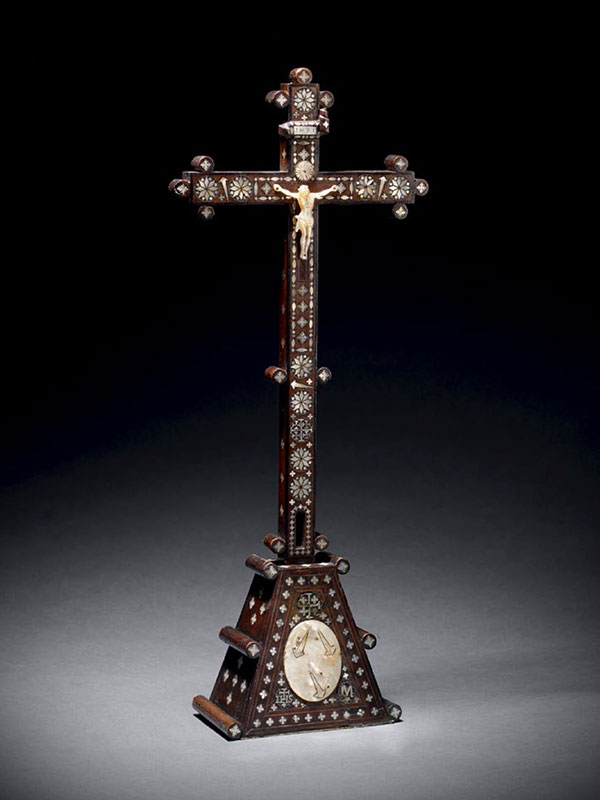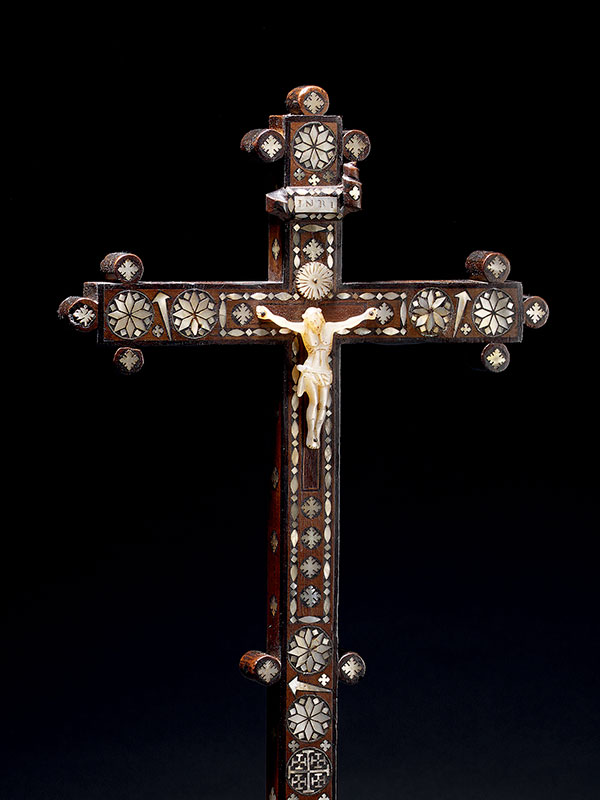Devotional inlaid crucifix
A carved olive wood model of Christ’s Crucifixion cross, inlaid with mother-of-pearl quatrefoils, rosettes and geometric patterns, and the inscription INRI on a rectangular mother-of-pearl panel. A figure of Christ carved from mother-of-pearl is attached. A separate tapering base is inlaid with a large oval shaped mother-of-pearl panel engraved with the three nails of the cross, surrounded by further mother-of-pearl inlaid florettes and the initials IHS and M.
Jerusalem was a holy city from the time of Constantine the Great and always attracted pilgrims and scholars. After the discovery and excavations of the Holy Christian sites it became an even more important focus for pilgrimage. The Franciscans returned to the city in 1335, and after this date numerous churches, monasteries and associated hospices were built to care for and accommodate Christian pilgrims. In the 17th century the Franciscan Friars began to take commercial advantage of this influx by founding workshops, using local Syrian craftsmen to make mother of pearl inlaid models of the Sepulchre, the tombs and objects in traditional style, to sell to the pilgrims as ‘souvenirs’, thereby boosting the monastery’s revenues. Comparable examples are in the Soares Branco collection in Lisbon.[1]
- Gorjao, S., The Light of the Orient, mother-of-pearl and Oriental objects of Christian Devotion, Collection of Domingos Soares Branco, 2003


